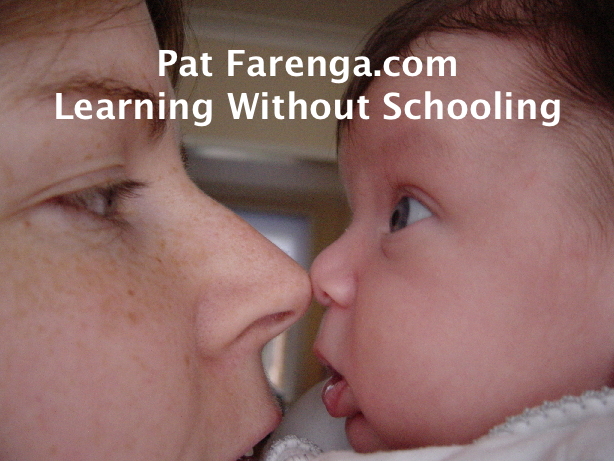The Importance of Vulnerability in Learning
 Thursday, March 3, 2011 at 11:50AM
Thursday, March 3, 2011 at 11:50AM I often hear about the qualities needed for children to learn effectively and they are, sadly, often the same among most schools and homeschooling parents: for instance, children should sit still and follow instructions, complete their assignments every day, and get good grades. From a technical, school-efficiency view of learning these qualities are vital for providing detailed records of student performance in order to inform the school what they will do next to the student, but from a person-centered view of learning they are not nearly as important. This view, which I hold, places individual motivation, open questioning, and the singular ways in which each child learns to be far more important for nurturing learning than school efficiency. As John Holt often noted, “…little children love the world. That is why they are so good at learning about it. For it is love, not tricks and techniques of thought, that lies at the heart of all true learning.” When I viewed this TED video by Brene Brown, author of The Gift of Imperfection, I understood, more completely, the importance of maintaining personal vulnerability, not just for learning but also for living a full life.
Dr. Brown presents herself as a hard-nosed researcher whose job is “to control and predict,” the essential task of research. However, as Dr. Brown, a social worker, applied hard science to her task of measuring the ability of people to feel connected to others, she learned that being able to feel connected to people also involved deep feelings of shame and fear, something she didn’t expect. As she explored the role of shame and fear in how we connect, or don’t connect, with others she also went on a fascinating personal journey that led her to change her ideas not only about social work but also about life, learning, and parenting. Brown initially follows her professor’s advice to “lean into the discomfort,” and she organizes the messy discomforts of her life and work into neatly arranged Bento boxes, but she eventually concludes that this is not how we can form authentic relationships with others, and so, applying her research to herself, she had to relearn how to be vulnerable, how to take risks in love and life, how to “lean into the joy.”
John Holt wrote at length, nearly 50 years ago, about how fear and shame inhibit learning (see How Children Learn and How Children Fail) and his observations are well supported by Dr. Brown’s research and stories. Though she doesn’t spend a lot of her time discussing children and learning, the overall message of this talk is so well presented and vital that you will easily make your own connections to parenting and education.

